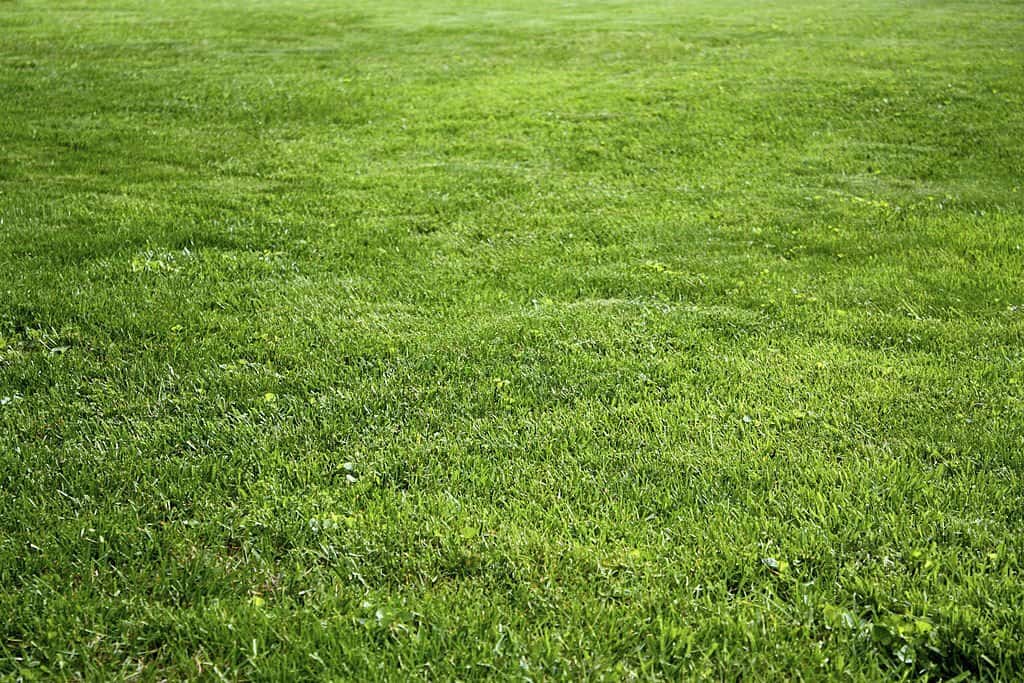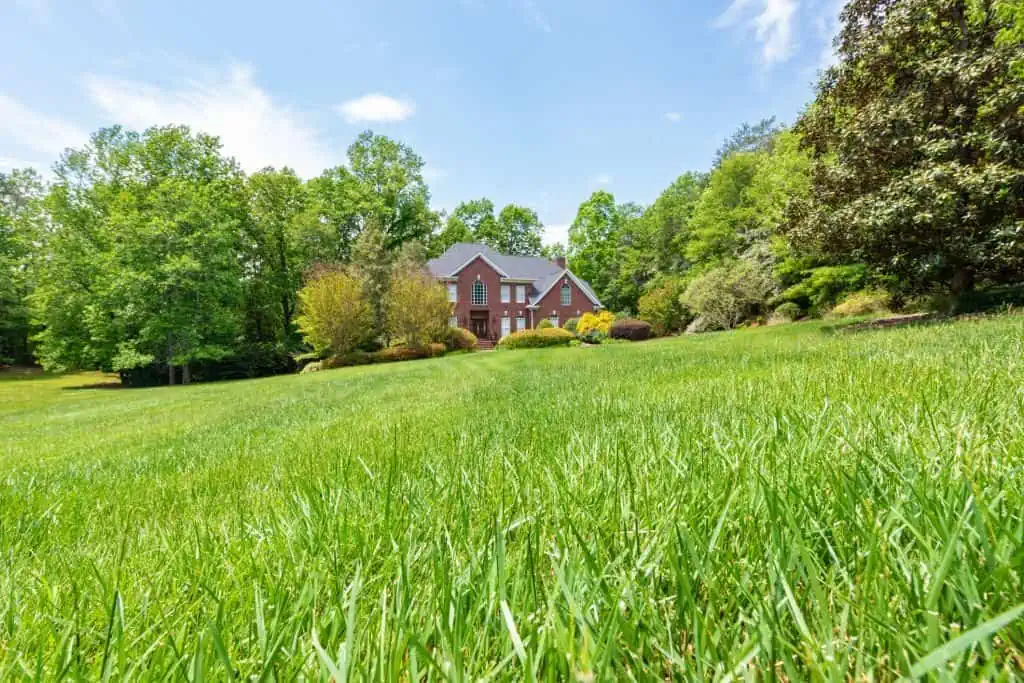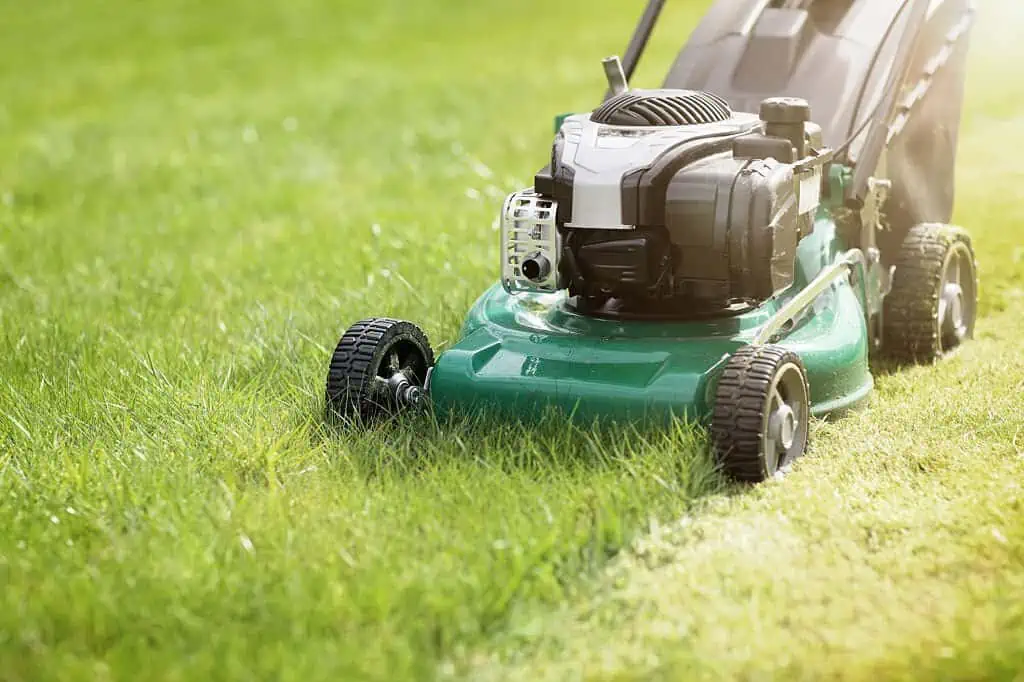Fine Fescue and Kentucky Bluegrass are one of the most popular cool-season grasses in the US. Kentucky Bluegrass is the most popular because it has a high traffic tolerance and is popular in open areas like parks and campuses. Both types of grass have many similar characteristics, but they’re not the same.
They don’t look alike, and they have different growing habits. However, they both makeup soft and beautiful lawns when you plant them.
This article will compare and contrast both grass types so that you can know the most suitable one for your application. You’ll learn their characteristics and their pros and cons.
What is Kentucky Bluegrass?
Kentucky bluegrass is cool season grass known for its soft texture and beautiful look. You can identify Kentucky bluegrass with its canoe-shaped leaf tip. It has a spreading growth habit and is among the most popular grasses in the US.

Kentucky Bluegrass grows best in fall and spring. It is one of the most cold tolerant of cool season grasses and survives in the cold Nothern climates. Kentucky Bluegrass has a low drought tolerance.
The reason for this low drought tolerance is its shallow roots. For this reason, Kentucky Bluegrass doesn’t perform well in transition zones. However, you can grow the grass in the warm season if you can handle the high watering requirements.
Kentucky Bluegrass is a slow-growing grass. It takes around 30 days to germinate, while other cool-season grasses like tall fescue and perennial ryegrass only take 7-14 days.
What is Fine Fescue?
Fine fescue is another type of cool-season grass popular in the US. It has different characteristics from Kentucky Bluegrass, and one of those characteristics is the look. Fine fescues have five different sub-species, hard fescue, sheep fescue, creeping red fescue, and slender creeping red fescue.

All these fescue types have similar characteristics. They all have narrow and fine-textured blades. They also have a lighter green color than Kentucky Bluegrass or tall fescue. Fine Fesucue has a spreading growth habit. The way it grows is one of the reasons it can make a beautiful no-mow lawn.
Fine fescues are also cool-season grasses but have a better drought tolerance than Kentucky Bluegrass. However, they can go dormant in drought conditions if you don’t water them well and will return to normal when the cool season comes around. Fine fescues perform better in shaded areas during hot weather.
The traffic tolerance of fine fescue is also on the low side. Therefore, it’s not popular in sports centers, campuses, or other high-traffic areas. Fine fescues grow best in the cool, humid regions of the Nothern transition zone in the US.
Watering Requirements
Like most other grass types, Kentucky Bluegrass has different mowing requirements at various times of the year. The grass type would need around one inch of water weekly. You’ll need to increase the watering requirement to 1.25 inches weekly if you plant it on sandy soil or in hot weather.
In the peak of summertime, you can either let the grass go dormant or water it frequently to prevent drought stress. Even if you let the grass dormant, understand that you must water it every three weeks to keep it in top shape ahead of the cool seasons.
Fine fescue doesn’t have separate watering requirements from Kentucky Bluegrass. You’ll come out with a top-notch fine fescue lawn if you maintain the watering conditions of fine fescue on your Kentucky Bluegrass lawn.
Mowing Requirements

Kentucky Bluegrass germinates quickly during spring and slower in the summer. How frequently you should mow it depends on the growth. You’ll need to cut your Kentucky Bluegrass once weekly during spring and fall and once every two weeks in the summer.
Mow the grass at 2.5 to 3 inches during fall and 3 to 3.5 inches in the summer. Avoid cutting off more than ⅓ of the grass blade when mowing it. If you want to keep your grass at 2 inches, cut the grass when it grows to three inches.
Keep mulch on the grass surfaces, as they provide valuable nutrients that aid germination. Ensure the grass blade is sharp so it won’t harm the grass during the cutting. Avoid cutting your grass when wet.
Soil Type
Kentucky Bluegrass grows best on well-drained fertile soils with a Ph of 6 to 7. It thrives best in areas of the US where the daily temperature is around 75°F.
Fine fescues thrive best on sandy soil and geminate better than Kentucky Bluegrass on infertile soils. It will develop better on soil with a PH of around 5.5-6.5.
Common Diseases
Fine Fescue has a moderate potential for diseases. It is hard to get infected by any disease if you maintain it well. When exposed to moist conditions or other unhealthy growing habits, it’s most susceptible to diseases like Dollar Spot, Leaf Spot, Summer Patch, and Leaf Thread.
Kentucky Bluegrass has a moderately high disease tolerance, but you’ll significantly minimize the risk if you maintain it well. Some of its most common diseases include Fairy Ring, Summer Patch, Leaf Spot, and Powdery Mildew.
Comparing the Cost
Fine Fescue seeds cost around $3-$8 per pound, while Kentucky Bluegrass sells for $6-$11. The price range for the grass depends on the quality and whether it’s coated or uncoated.
If you’re planting Fine Fescue, you’ll need around 3-6 pounds per 1,000 square feet, while Kentucky Bluegrass only requires 2-3 pounds. Therefore, you’ll spend more planting Fine Fescue than Kentucky Bluegrass. This money, combined with other maintenance expenses, Fine Fescue is the most expensive.
Understand that you’ll spend considerably more if you want to purchase sods. Sods will eliminate the need to plant the grass from scratch, and you’ll still have a beautiful lawn. If you prefer to tend your grasses, get the grass seeds and have fun!
Fertilizing Requirements
Kentucky Bluegrass and Fine Fescue have some similar fertilizing requirements. Fall is the best time you should fertilize both types of grass. Both grass types would need around 0.5-1 pounds of nitrogen per 1,000 square feet during this period.
Spring isn’t the best time to fertilize the grasses, but if you must do so, feed the grasses 0.5-1.0 pounds of nitrogen for every 1,000 square feet. You don’t need to fertilize in the summer.
Which Grass Should You Buy?
The grass type you should buy depends on several factors, like location, personal preferences, application, etc. Both types of grass are cool season grasses and thrive best in the Nothern areas of the US. However, Fine Fescues will germinate better in the transition areas than Bluegrass.
If you live in a place where kids would be running around frequently on the grass, Kentucky Bluegrass is your best option of the two. Fine Fescue has a low traffic tolerance and succumbs to foot pressure. Kentucky Bluegrass has a soft blade like Fine Fescue; your kids can play on it barefoot.
The time that you have for maintenance is a factor that many people tend to overlook. Kentucky Bluegrass is high maintenance. On the other hand, Fine Fescue is one of the cool season grass with the lowest maintenance requirements, and it’s your best option if you have a tight schedule. However, you can always outsource your Bluegrass care to lawn care professionals if it’s your preference.
The shade tolerance of Kentucky Bluegrass is also on the poor side. However, they’ll thrive and come out well if you expose them to the heavens. On the other hand, Fine Fescues thrive better under shade.
Conclusion
There’s all that you need to know Fine Fescue Vs. Kentucky Bluegrass. Each grass type has pros and cons, and the one to choose depends on your application. You should carefully evaluate your options so you can select the perfect one. This article has helped you highlight the characteristics of both grass types.
Whichever of the grasses you want, adequate care from day 1 is the key to developing them into a healthy lawn. Remember, you’ll need to put more work into caring for your Kentucky Bluegrass than Fine Fescue. If you don’t want to bore yourself with grass care, both have sods that look amazing for your space.






